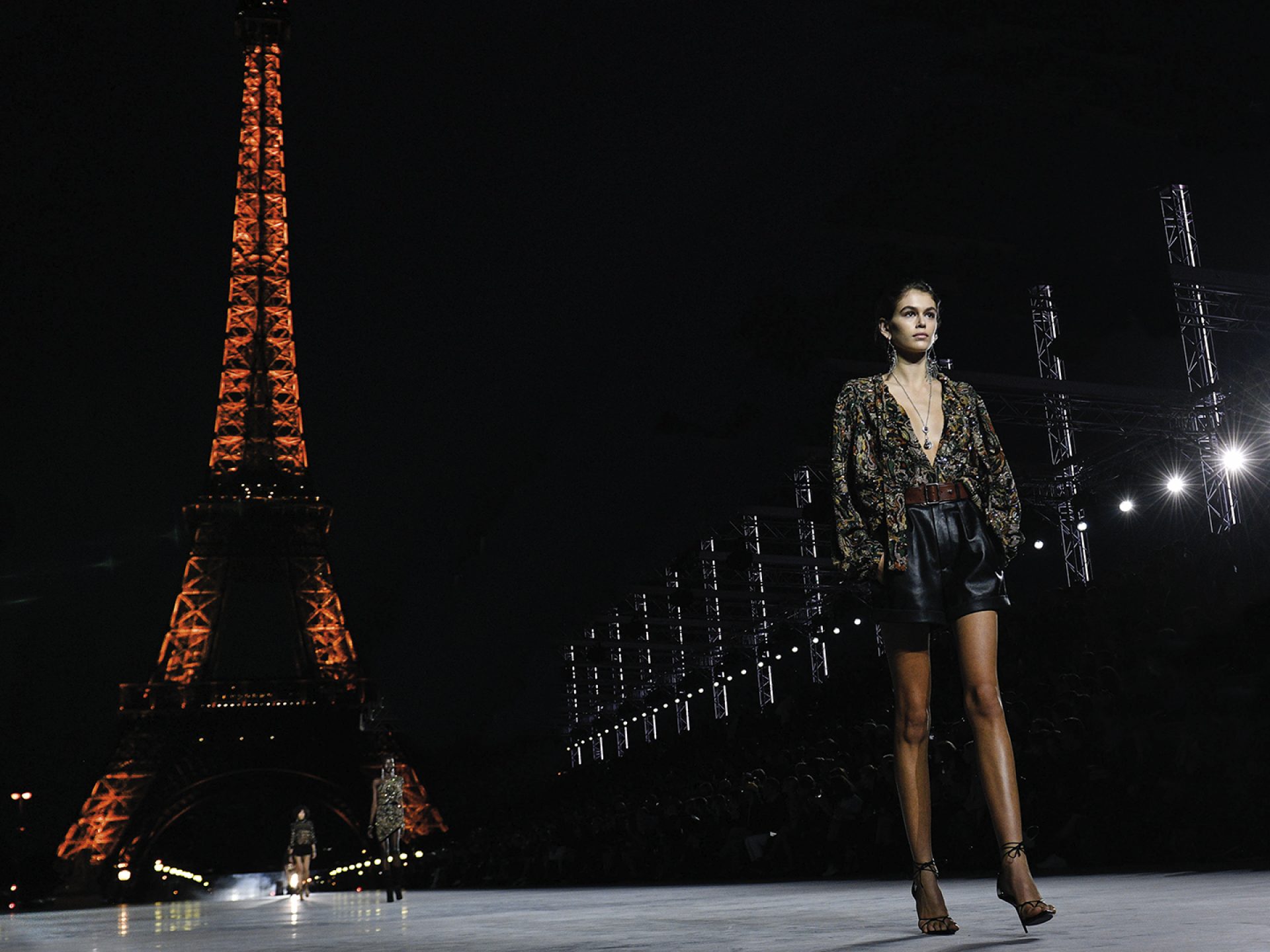November 22, 2018
The Endless Runway

This article was originally published in Populous Magazine, our biannual publication featuring news, information, and trends from the worlds of sport, entertainment, and major public events. Find out more, and sign up to receive a free copy, here.
Live broadcasting, myriad VIP celebrities, Hollywood-style film sets and world-famous landmarks… how on Earth did fashion shows become so extravagant? More importantly, why?
French fashion house Saint Laurent certainly know how to throw a party. In September 2017 they staged perhaps their most ambitious show ever in Paris’s Jardins du Trocadéro. While models glided down a moodily lit catwalk, the Eiffel Tower lit up the city skyline just across the other side of the River Seine. The various outfits on display – lots of leather, feathers, sequins, velvet, suede, big-cat print and perilously high stilettos – and the beautiful models they adorned couldn’t begin to compete with the dramatic backdrop of the French capital at its finest. Saint Laurent later repeated the trick in New York City with the Manhattan skyline sparkling in the distance.
All the world’s top fashion houses are now mining every available resource in their attempt to stage jaw-dropping fashion shows. Chanel is the most outrageous of them all. Guided by the ever-inventive Karl Lagerfeld, over the years they have decked out Paris’s Grand Palais with spectacular scenes ranging from real Arctic icebergs, a fairground carousel and a bomb-damaged theatre, to a 150-metre-long cruise ship, an airport, an Indian palace and even a space station with its very own rocket blasting off. In 2014 they spent two months and a reported US $1.7 million building a catwalk on a man-made island off the coast of Dubai.
The other big names in the industry have done their best to keep up with all this extravagance. Earlier this year Louis Vuitton chose Japan’s Miho Museum and the surrounding mountains as a backdrop for their cruise show, while in 2016 Fendi placed a plexiglas runway across Rome’s Trevi Fountain so that it appeared as if their models were walking on water. Back in May this year Christian Dior hired out the stables at the gloriously opulent Chateau de Chantilly, not far north of Paris, turning the runway into a Mexican-themed rodeo, where the horses looked almost as beautiful as the models.
Lorem ipsum dolor sit amet consectetur, adipisicing elit. Non facere corporis et expedita sit nam amet aut necessitatibus at dolore enim quis impedit eius libero, harum tempore laboriosam dolor cumque.
Lorem, ipsum dolor sit amet consectetur adipisicing elit. Illo temporibus vero veritatis eveniet, placeat dolorem sunt at provident tenetur omnis, dicta exercitationem. Expedita quod aspernatur molestias eum? Totam, incidunt quos.